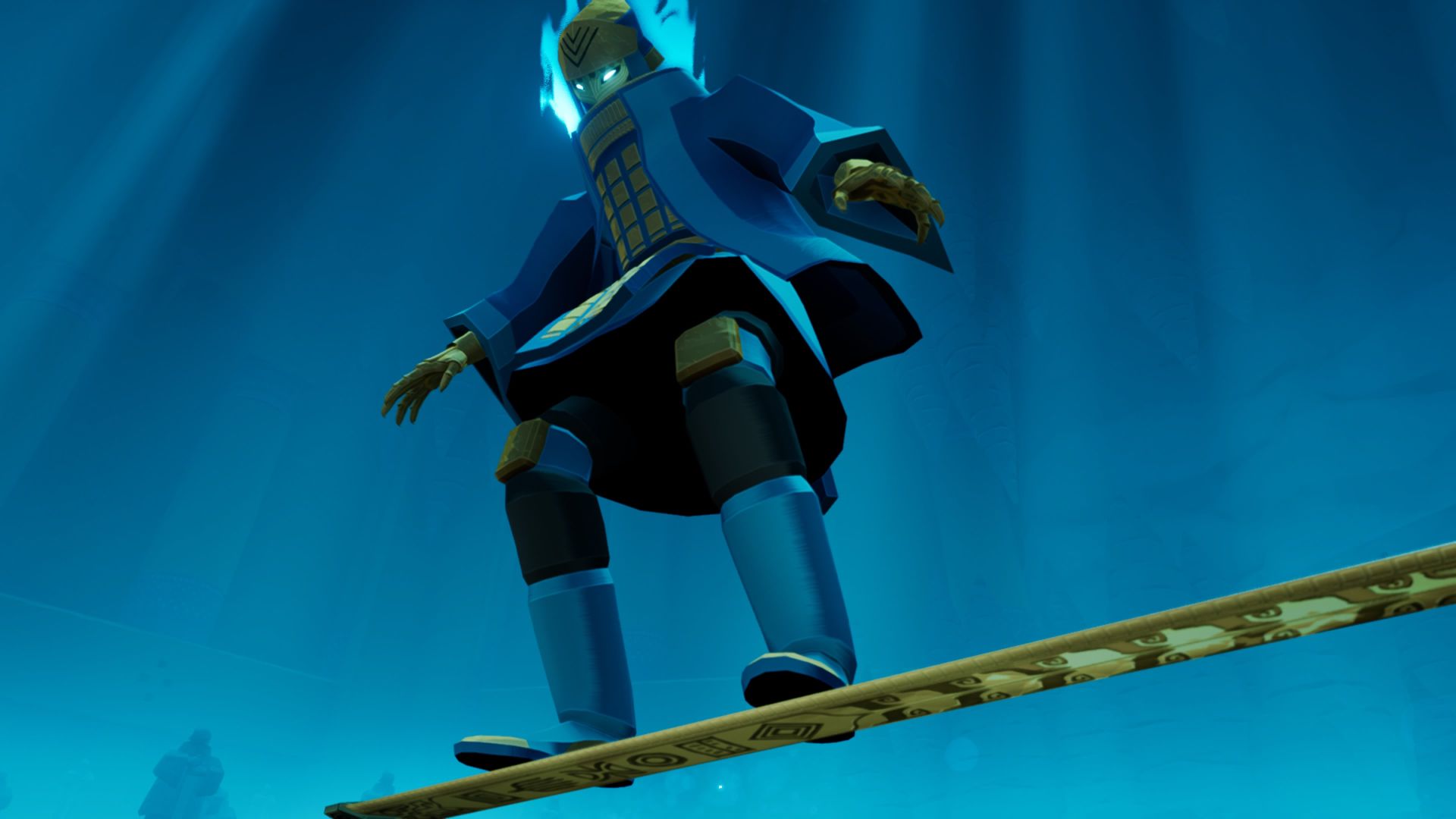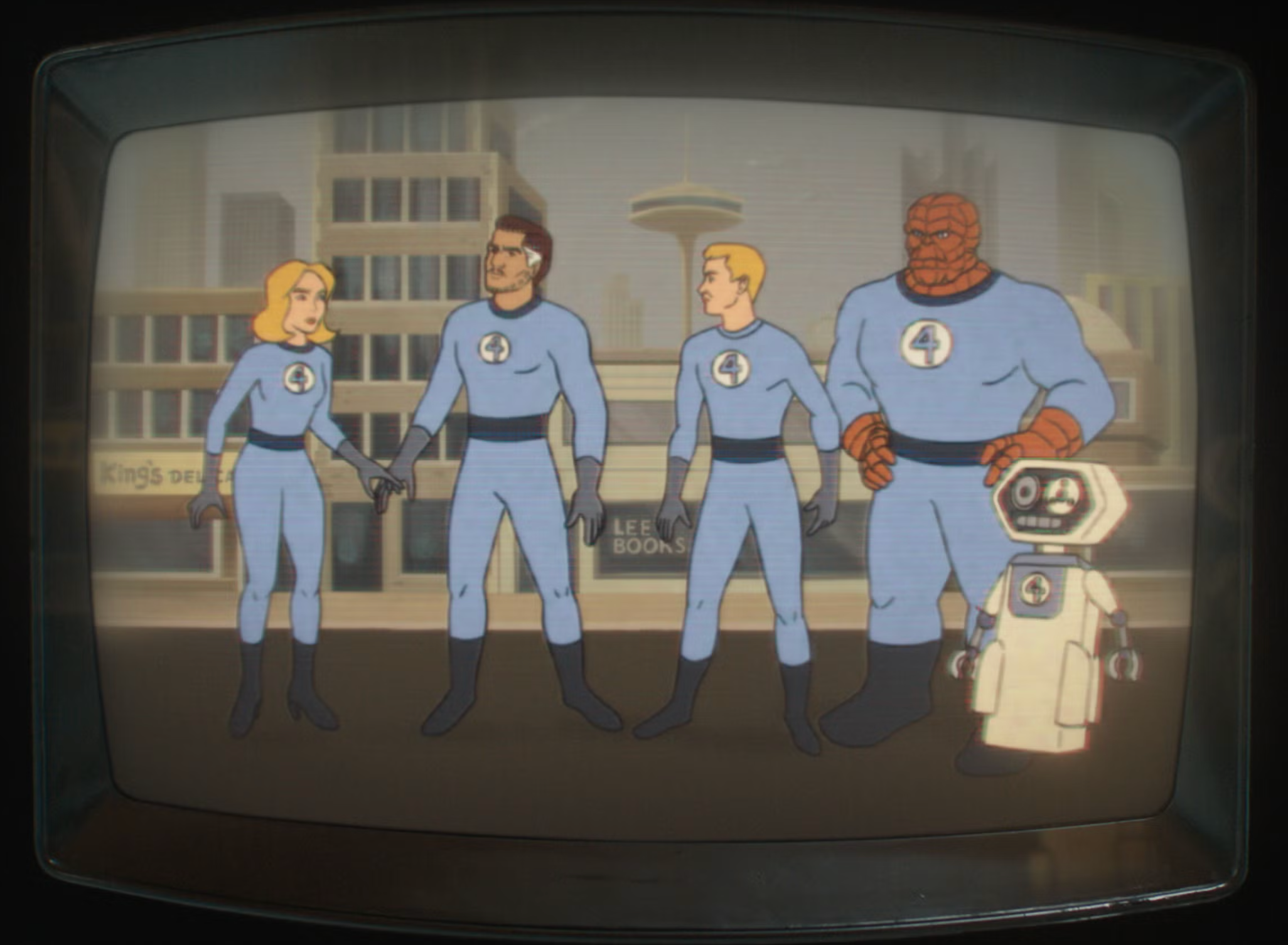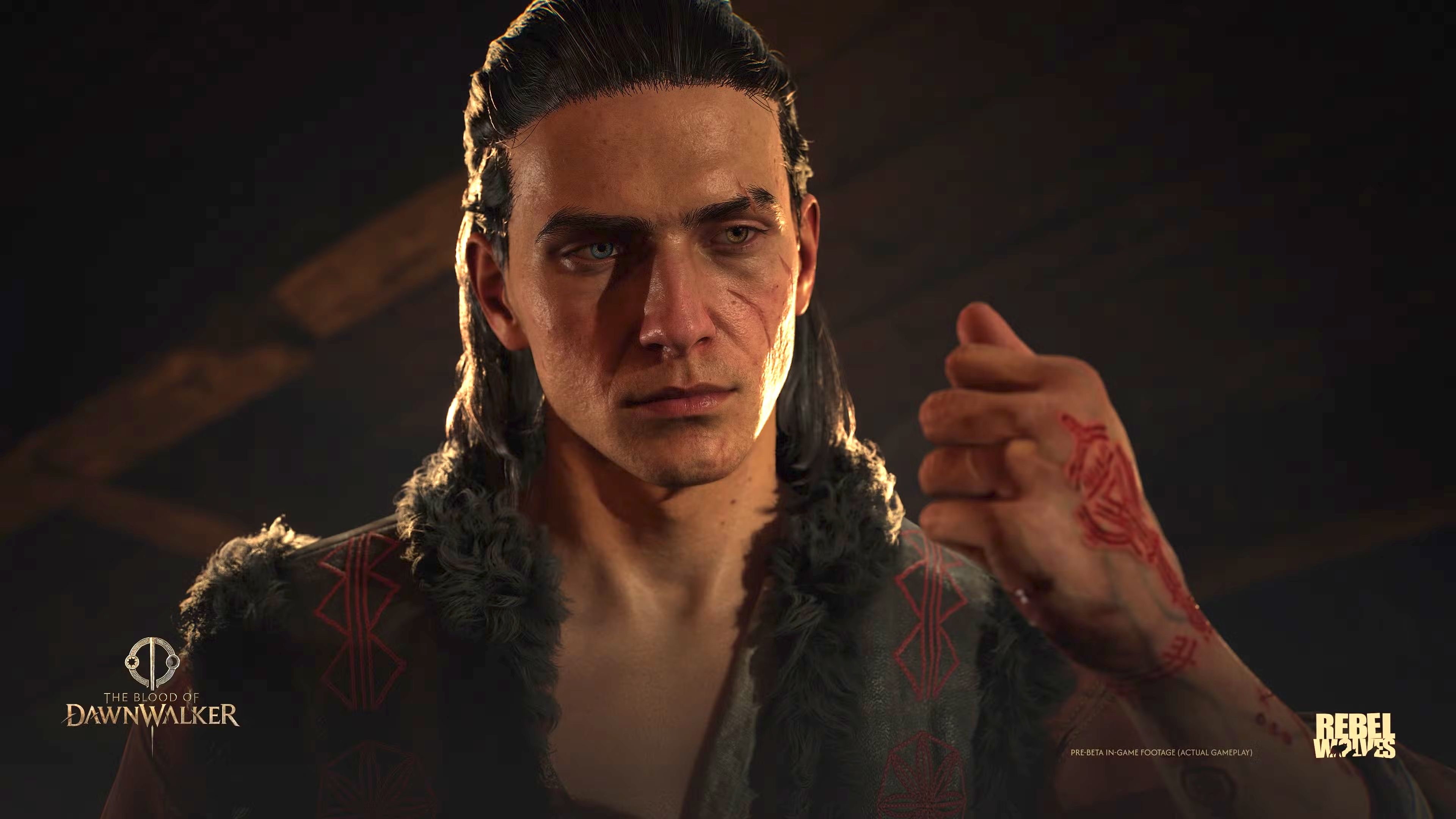The Marvel faithful who hung around after The Fantastic Four: First Steps didn’t get to see the “Robert Downey Jr. as Doctor Doom” cameo they were probably hoping for. But they did get a mid-credits live-action tease for Avengers: Doomsday, and a post-credits animated sequence building out First Steps’ world. That post-credits cartoon — an expanded version of a short clip seen earlier in the movie — is styled as the intro sequence for a hilariously retro Fantastic Four cartoon from the super-team’s alternate universe. Anyone who’s seen clips from Hanna-Barbera’s 1967 animated Fantastic Four TV series might recognize the visual style. But as sequence director c told Polygon via Zoom, there was a lot more to making the animated bumper fit the universe and meet viewers’ unconscious expectations than just emulating an old Marvel show.
Wilches is a creative director at Titmouse, the prolific animation studio that’s worked on series as diverse as Legend of Vox Machina, Star Trek: Lower Decks, Big Mouth, and Scavengers Reign. He primarily takes on special projects like the First Steps end cartoon. We asked him to walk us through the history of the First Steps cartoon intro — how his work on WandaVision paved the way, how Alex Toth and Jack Kirby factored into the art, and especially how he had to stop being “a very nice director” to get his staff to produce something this visually streamlined and simple.
How WandaVision connects to Fantastic Four: First Steps’ animated scene
Back in 2020, First Steps director Matt Shakman was working on WandaVision, Marvel’s first Disney Plus series. The show’s conceit revolved around Wanda Maximoff (Elizabeth Olsen) altering reality to emulate a variety of classic TV sitcoms. Shakman wanted an animated intro for episode 2 that mimicked the classic animated intros for Bewitched and I Dream Of Jeannie. It was the perfect project for Wilches.
“I have a huge thing for nostalgia and animation,” he says. “You won’t see a lot of anime coming from me, or crazy action — it’s more this sort of very bespoke project.”
Ultimately, Titmouse handled both WandaVision’s black-and-white episode 2 intro and another animated sequence, episode 9’s stop-motion yogurt ad. That was the start of a relationship with Marvel that continues with First Steps, and that draws on Wilches’ comics expertise.
“I’m a huge Marvel Comics fan, and I put a lot of Easter eggs [into these sequences],” Wilches says. “People started reading into those, like universes were going to expand out of these little things.”
Getting the First Steps job was “a much easier process,” according to Wilches. Titmouse already had experience working with Marvel, so it was an obvious fit, especially once Shakman revealed the new assignment.
“As soon as they mentioned the 1960s Fantastic Four, I was like, ‘Please, can I do it?’ Because I’m a huge fan of Alex Toth, the guy who designed most of Hanna-Barbera’s stuff in the ’60s,” Wilches says. “I actually had a cel from the original [Fantastic Four cartoon]. I pulled it out and said ‘Can I do this? Please?’”
Capturing ‘awkward beauty’ in animation
Once Titmouse got the contract, Wilches says, there was “a lot of exploring at first” about what exactly the animated sequence should show or include. Because the movie starts at a point well past the Fantastic Four’s origin story, Shakman and Disney wanted some way to show off the characters’ powers and where they came from. “We brainstormed a few options for what it could be, and we ended up with, ‘Why don’t we just imagine the intro for an animated show?’”
Early on, the team decided not to directly reference the ’60s Hanna-Barbera Fantastic Four, the way the WandaVision animated sequence referenced Bewitched. While Wilches says his team did look at Toth’s animation reference sheets for the ’60s characters, he was more interested in capturing the feel of the old series, rather than any specific design choices.
“We wanted something new, but old-new. We wanted to feel nostalgic, but a little bit more modern, to fit the movie,” Wilches says. Tonally, he says Shakman “was very specific — but emotionally specific, just ‘This needs to feel right.’ I shared that with him. As long as it feels like it’s from the right era, it doesn’t really matter what specific images are chosen.”
Part of the mentality in designing the sequence had to be a respect for the era it’s referencing. “If you go watch the Hanna-Barbera show, you can make a lot of fun of it, because it’s very wonky at points,” Wilches says. “You can see a lot of production challenges. But that’s the kind of thing I love, especially now, in an era where everything is hyper-polished and artificial. I love to see the mistakes, when you can see the cel or the dirt. To me, that was the most important thing to capture here — what I call the awkward beauty of the show. I still think it’s so beautiful, and I lose myself in those backgrounds, but I cannot deny that it’s still very awkward. It has a lot of limitations.”
Capturing those limitations with modern digital tools wasn’t inherently difficult — not like the “fighting the computer” experience of creating stylized CG animation with tools designed for photorealism. Wilches says it was more about teaching his team how to scale back on the kind of detail they were used to producing.
“The first pass on everything was so extremely [slickly] done. And I was like, ‘No, guys, we need to go back and try to imagine ourselves in that time, with those limitations. We have the best, most modern tools, but we need to use them in the way those people would’ve used their tools at the time.’ So no shortcuts, everything has to be hand-painted. Doing less sometimes gives a better result.”
Making 1960s animation with 2020s technology
Part of that attitude included trying to reproduce the flat, simple cel backgrounds of Hanna-Barbera’s work in an era used to 4K imagery.
“We have unlimited zoom, right? On a TV screen, we can just go super-deep,” Wilches says. “But thinking back to being a child, when you see something less defined, it opens up your imagination for what is behind the things that you can see. There’s always a world that you can imagine. So to me, being undefined is the thing that excites me most about animation, because it’s the things you don’t see that make it a delight for the brain.
“So that was a key thing to tell the designers: ‘Just because you have a thousand-percent zoom doesn’t mean you should use it. Just stick to a hundred-percent zoom, and stick to one size of brush.”
In other cases, Wilches had to ask his animators to stop using the automatic fill tools because the digital paint jobs looked too uniform.
“We had the luxury of not needing to be efficient in this one,” he says. “So I am normally a very nice director, but I was sending stuff back [to the animators], like, ‘I can see you used the paint bucket here. Can you just paint it by hand?’”
The final pass on the animation involved adding a layer of grain and fuzz that anyone watching it today would expect from an older cartoon.
“We’re all used to seeing these shows from YouTube rips or VHS copies,” Wilches says. “I’m sure when they did them, they were super high-definition, extremely well-defined. But the things we’re calling back to are fuzzy, a little bit offset. That was the last coat of paint, was to make it look like a VHS copy. If we made it super-sharp, it might look like a thing from the future, but it’s not going to look like the thing we all remember and love.”
Matching First Steps’ live-action look and feel
Given how Marvel Studios keeps its content close to the vest before release, I had to wonder how much Titmouse knew in advance about First Steps’ character designs and costumes, the live-action look of characters like Galactus, or Shakman’s overall retro-tech ’60s design. Wilches says that wasn’t a problem — if anything, Marvel gave him so much reference material that he got a little nervous from a fan perspective.
“I’m a huge fan of the whole Marvel universe, and we kept getting all these references from the movie in progress, and I was like, Oh my God, I’m getting spoiled,” he says. “But they did provide us with [references for that] retro-future look they were using in the movie. And then, for us, it was ‘How do we translate those very polished, stylish designs into the awkward beauty of the TV show?’”
Part of that process was also reproducing the four primary actors — Pedro Pascal, Vanessa Kirby, Joseph Quinn, and the CG’d version of Ebon Moss-Bachrach — in animation, in a way where they’d be recognizable, but not caricatures.
“Designing the characters, the likenesses of the actors — that was a concern at first, because you feel like you have to represent these famous stars. But again, everybody was so open, and we had the benefit of working within this framework of making stuff that was awkwardly beautiful. So they’re not perfect reproductions, but you can still identify them as who they are.”
Wilches calls all these elements — the scaled-back animation, the awkward beauty, the not-quite-caricatures of movie stars — “a weird direction” for his team. But it’s a direction he found satisfying and rewarding. “It’s not a very technical direction,” he says. “It’s more like a spiritual direction, more like a philosophical thing. We’re living in a very strange time: Technology is all around us, and it is redefining all these things. And so to be able to go back in time and just use tools in the most pedestrian way, I feel like it gave us a moment of peace. We can relax, we can take a breath.”
The Fantastic Four: First Steps is still playing in theatrical release.







![22nd Aug: Maa (2025), 2hr 13m [TV-MA] (6/10)](https://occ-0-2603-999.1.nflxso.net/dnm/api/v6/Qs00mKCpRvrkl3HZAN5KwEL1kpE/AAAABTohueqeaehsIpK3ZVjYhENnCEfOwbhHK0w5KMW7qDWsV-vcCUv5uphyZLkyU7lS-QAE0fE5LvzlSf4rr67lcQcP3o1v2n-5_6Q9n3OSWrZgE3n9rzRDYWSWE6MH8fPii720mT9IZS_wLnkrpfq2adgYd1a1Lw6i0aVDoV_OcckZ0w.jpg?r=636)







